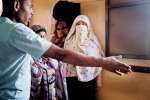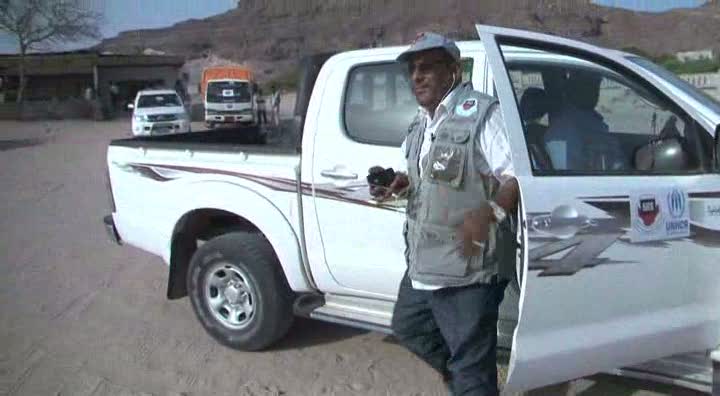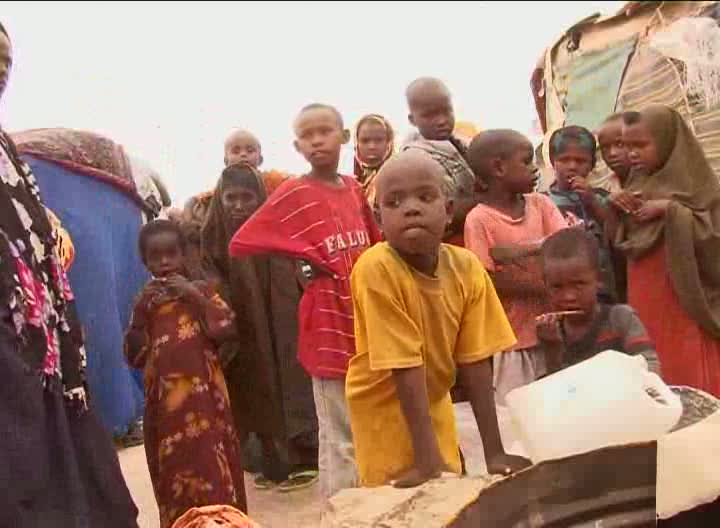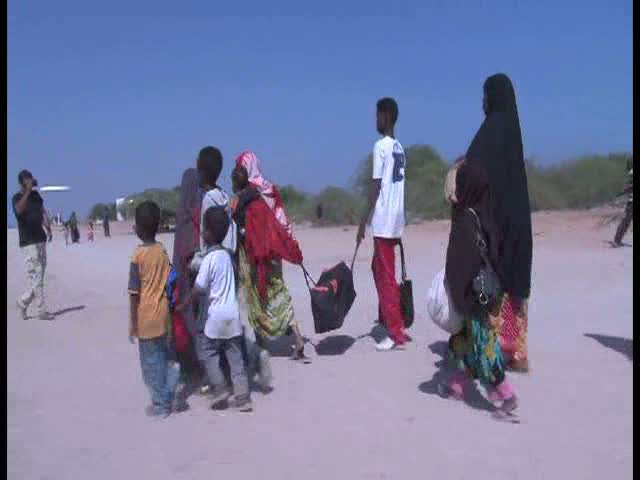- Text size
 |
|  |
|  |
| 
- عربي
Almost 100,000 flee Yemen in four months since fighting started
News Stories, 4 August 2015
GENEVA, Aug 4 (UNHCR) – Almost 100,000 people have fled Yemen since conflict erupted there in late March, but the UN refugee agency warned on Tuesday that its regional response to help receiving countries cope with the outflow was seriously hampered by under-funding.
UNHCR said that overall only one-fifth of its funding needs had been met. In Somalia, where over 28,000 people have arrived, just five percent of the required funding, estimated at US $64 million, has been received.
"While many of these people have not sought help as refugees, around 54,000 have registered with UNHCR and government authorities for assistance of various kinds." UNHCR spokesperson Adrian Edwards told a press briefing in Geneva.
He added that with funding also low for operations inside Yemen: "UNHCR is concerned that delivery of assistance there, as well as to refugees fleeing the country, will be at risk without additional funding soon."
Overall, the regional UNHCR emergency response has received US$ 26.4 million (20 percent), leaving a funding gap of US$ 107.7 million.
SOMALIA
With the arrival in Bossaso, Puntland on 30 July of a boat carrying over 2,500 people (2,197 Somalis, 337 Yemenis and nine others), total arrivals from Yemen to Somalia in July were almost 10,000 people (9,864).
"This is the highest monthly arrival figure to date; the previous high was in May, when 8,683 arrivals were recorded. As of 30 July, over 28,000 individuals (25,429 Somalis, 2,726 Yemenis, and 205 other third country nationals) have arrived in Somalia since 26 March," Edwards noted.
The majority have been arriving in Bossaso (65 percent) and Berbera, Somaliland (34 percent).
UNHCR and partners provide assistance to returnees to Somalia, including onward transportation to areas of origin or return. Almost 7,000 Somalis have returned to South Central regions (5,000 in Mogadishu), some joining settlements for internally displaced people there.
"More heIp is needed to ensure basic services and livelihoods and strengthen registration and verification and reception capacity at the main ports, particularly as outflows of Somali nationals are expected to continue," Edwards added.
DJIBOUTI
In Djibouti, 21,726 people had arrived from Yemen as of the end of July. Of these 9,953 (46 percent) are Yemeni nationals, while a further 9,946 are transiting third country nationals and 1,827 (eight percent) are Djiboutian returnees.
ETHIOPIA
In Ethiopia 3,210 people have arrived from Yemen since March including 2,500 Somalis and 706 Yemenis. Somalis already registered as refugees in Yemen, after crossing the borders of Djibouti and Somaliland, are arriving in the eastern and northern regions of Ethiopia and are being assisted through existing projects in refugee camps there. An additional US $500,000 is needed for registration and transportation and distribution of emergency assistance to new arrivals in Jijiga in eastern Ethiopia.
Some Yemeni refugees arriving in Ethiopia are being helped through a UNHCR urban refugee programme in Addis Ababa but arrivals have already exceeded the number predicted for the whole of 2015. As a result, UNHCR's main partner there is unable to assist further urban refugees. UNHCR Ethiopia urgently requires an additional US $570,000 to respond to this rapid increase in urban refugees.
OTHER COUNTRIES
Elsewhere some 5,000 arrivals comprised of mixed nationalities have been recorded in Oman since the conflict started while some 30,000 Yemenis and 9,880 third country national arrivals have been recorded in Saudi Arabia. Of these, 4,204 remain in Saudi Arabia while the remainder have transited to other countries. With a further 271 arrivals in Sudan, this makes a total of 98,176 arrivals in receiving countries in just over four months across the region.
YEMEN
The UNHCR emergency response inside Yemen is also seriously underfunded at just 23 percent of the required US $105.6 million. Some 1.2 million internally displaced people and approximately 250,000 refugees continue to need assistance in extremely challenging conditions with severely restricted access.
"UNHCR reiterates that any returns to Yemen from receiving countries must be voluntary and based on a free and informed choice," Edwards concluded.









































